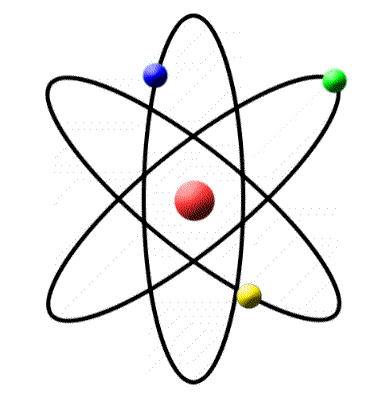If the two metals $A$ and $B$ are exposed to radiation of wavelength $350 mm$. The work functions of metals $A$ and $B$ are $4.8 eV$ and $2.2 eV$. Then choose the correct option
If the two metals $A$ and $B$ are exposed to radiation of wavelength $350 mm$. The work functions of metals $A$ and $B$ are $4.8 eV$ and $2.2 eV$. Then choose the correct option
Show Hint
- Both metals A and B will emit photo-electrons
- Metal B will not emit photo-electrons
- Both metals $A$ and $B$ will not emit photo-electrons
- Metal A will not emit photo-electrons
The Correct Option is D
Approach Solution - 1
Approach Solution -2
Top Questions on Atoms
- Prove that, in the Bohr model of the hydrogen atom, the time period of revolution of an electron in the \( n \)-th orbit is proportional to \( n^3 \).
- The distance of closest approach of an alpha particle from a nucleus when the alpha particle moves towards a nucleus with a kinetic energy 'E' is 'x'. The distance of closest approach when the alpha particle approaches the same nucleus with kinetic energy 0.4E is
- The ratio of frequencies of second line of Lyman series and third line of Balmer series of hydrogen atom is:
- The ratio of wavelengths of second line in Balmer series and the first line in Lyman series of hydrogen atom is
- Describe the atomic model of Rutherford. How did Bohr model removed its drawbacks?
Questions Asked in JEE Main exam
Let \( a \in \mathbb{R} \) and \( A \) be a matrix of order \( 3 \times 3 \) such that \( \det(A) = -4 \) and \[ A + I = \begin{bmatrix} 1 & a & 1 \\ 2 & 1 & 0 \\ a & 1 & 2 \end{bmatrix} \] where \( I \) is the identity matrix of order \( 3 \times 3 \).
If \( \det\left( (a + 1) \cdot \text{adj}\left( (a - 1) A \right) \right) \) is \( 2^m 3^n \), \( m, n \in \{ 0, 1, 2, \dots, 20 \} \), then \( m + n \) is equal to:
- JEE Main - 2025
- Determinants
Rate law for a reaction between $A$ and $B$ is given by $\mathrm{R}=\mathrm{k}[\mathrm{A}]^{\mathrm{n}}[\mathrm{B}]^{\mathrm{m}}$. If concentration of A is doubled and concentration of B is halved from their initial value, the ratio of new rate of reaction to the initial rate of reaction $\left(\frac{\mathrm{r}_{2}}{\mathrm{r}_{1}}\right)$ is
- JEE Main - 2025
- Chemical Kinetics
- Preparation of potassium permanganate from MnO\(_2\) involves a two-step process in which the 1st step is a reaction with KOH and KNO\(_3\) to produce:
- JEE Main - 2025
- Preparation
- Let $ A = \left\{ \theta \in [0, 2\pi] : \Re\left( \frac{2 \cos \theta + i \sin \theta}{\cos \theta - 3i \sin \theta} \right) = 0 \right\} $. Then $ \sum_{\theta \in A} \theta^2 $ is equal to:
- JEE Main - 2025
- Trigonometric Equations
- An aqueous solution of 0.1 M HA shows depression in freezing point of 0.2°C. If $ K_f $ (H$_2$O) = 1.86 K kg mol$^{-1}$ and assuming molarity = molality, find the dissociation constant of HA.
- JEE Main - 2025
- Solutions
Concepts Used:
Atoms
- The smallest unit of matter indivisible by chemical means is known as an atom.
- The fundamental building block of a chemical element.
- The smallest possible unit of an element that still has all the chemical properties of that element.
- An atom is consisting of a nucleus surrounded by one or more shells of electrons.
- Word origin: from the Greek word atomos, which means uncuttable, something that cannot be divided further.
All matter we encounter in everyday life consists of smallest units called atoms – the air we breath consists of a wildly careening crowd of little groups of atoms, my computer’s keyboard of a tangle of atom chains, the metal surface it rests on is a crystal lattice of atoms. All the variety of matter consists of less than hundred species of atoms (in other words: less than a hundred different chemical elements).

Every atom consists of an nucleus surrounded by a cloud of electrons. Nearly all of the atom’s mass is concentrated in its nucleus, while the structure of the electron cloud determines how the atom can bind to other atoms (in other words: its chemical properties). Every chemical element can be defined via a characteristic number of protons in its nucleus. Atoms that have lost some of their usual number of electrons are called ions. Atoms are extremely small (typical diameters are in the region of tenths of a billionth of a metre = 10-10 metres), and to describe their properties and behaviour, one has to resort to quantum theory.